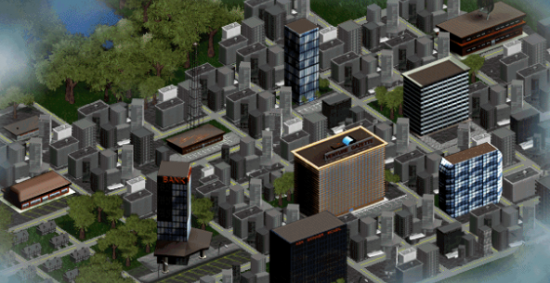Experiential learning — learning by doing — is a hot topic these days and getting hotter. I’ve been evangelizing the benefits of experiential learning for over a decade. But, as much as I believe in the power of experiential learning, it’s important to recognize its limitations.

There are two ways to learn by doing: We can gain experience in the real world through our daily activities, or we can gain experience virtually in an activity, game, simulation, or virtual world.
Intuitively, we might automatically believe that there is no substitute for gaining experience in the real word. But, further investigation leads to a different conclusion. Virtual experience can, in fact, be much more effective.
- With virtual experience, there is no risk. No danger. No loss of money or resources (other than the cost of designing and doing the activity). Minimal loss of time. Not so in the real world.
- With virtual experience, we can succeed through failure. The effectiveness of trial and error should not be underestimated. It’s often said that we learn more from our failures than we do from our successes. Perhaps it’s because we tend to do more analysis when we fail. Or that the emotional toll it takes on us makes the experience more memorable and drives us to avoid it in the future (as some brain research suggests). In any event, failure in the real world has consequences that discourage or prevent us from even trying.
- With virtual experience, we can simulate any condition we want. For example, how can a pilot learn to fly an airplane in poor weather conditions? Does he jump into a real plane and go looking for a storm? How does he learn to fly with mechanical failure? You get the point.
- With virtual experience, we can control and accelerate the timing of events. Not so in the real world. For example, as a business owner, how long would it take you to experience customer, human resource, financial, and other issues before you gained the wisdom to anticipate and avoid such problems in the future? Would it take months, years, decades?
- With virtual experience, we can isolate and exaggerate cause and effect. In the real world, the consequences of our decisions (and indecisions) may not be easily apparent. They may be hidden from view, or they may be influenced by an endless number of other variables. For example, let’s say you invest in a stock, but the value of the stock falls within days of your purchase. Does this mean that something has gone wrong with the company? Or that you chose to invest in the wrong stock? Are all stocks bad? Perhaps it is the economy? If we cannot recognize and evaluate cause and effect, how can we truly learn how the world works?
- With virtual experience, we can guide the learner towards making the correct conclusions. In the real world, our brain is constantly making connections and conclusions, whether we realize it or not. And some of those conclusions are plain wrong (or at the very least, based on insufficient data). For example, if ice-cream sales increase during crime sprees in Central Park, does that mean eating ice-cream encourages criminal activity? Closer investigation might reveal that weather is the driver, not the ice-cream. But, how can we even know when we are coming to incorrect conclusions? It takes a very well-trained mind to see the world objectively, and few people have this ability.
- Virtual experience can be personalized and measured. Learner strengths and weaknesses can be captured and used to guide the learner towards overcoming deficiencies while refining existing skills. Performance can be directly monitored and assessed in an accurate, authentic, and meaningful way. The inefficient and subjective trial-and-error, multiple-choice testing, and peer-review methods used in the real world pale in comparison. And, as the saying goes, “you can’t manage what you can’t measure.â€
- Virtual experience can be highly motivating. The real world often delivers significant emotional consequences to a learner, including stress, loss of self-esteem, loss of time, money, and more. I remember hating my first day on the job at IBM. But, eventually, the job turned out great and shaped my life. What if I had quit on that first day? The safety of a virtual experience, combined with well-designed gamification techniques, can create an encouraging and rewarding environment that is free of the many factors that discourage people from pursuing their dreams.
- Virtual experience can be highly scalable and widely accessible.Potentially millions of people can participate in a virtual experience at the same time, at a comparatively minimal cost. It’s pretty well impossible to conjure up the massive amounts of time, money, and resources needed to make meaningful real-world experience available to the masses.
To me, that’s a pretty convincing list of benefits.
Of course, there are limitations to virtual experience as well. Not everything can be simulated in an effective way. Hey, if you want to learn how to ride a bike, at some point you are going to have to get on a real bike and start peddling.
It may also be argued that the designer of the virtual experience may be able to knowingly, or unknowingly, apply undue influence, incorrect data, or subliminal messaging into the learning experience. True. But the same can be said of all other educational methods and the real world too.
Virtual experiences have many advantages, and as technology and education continue to evolve, I continue to believe these types of experiences are going to revolutionize learning as we know it.
(This article adapted with permission from MediaSpark.)
- 9 ways virtual learning is better - June 26, 2012
